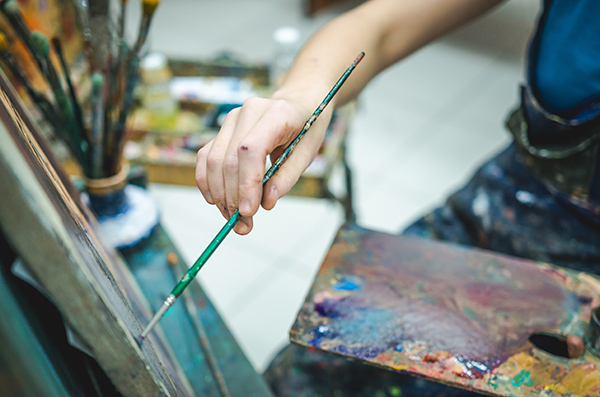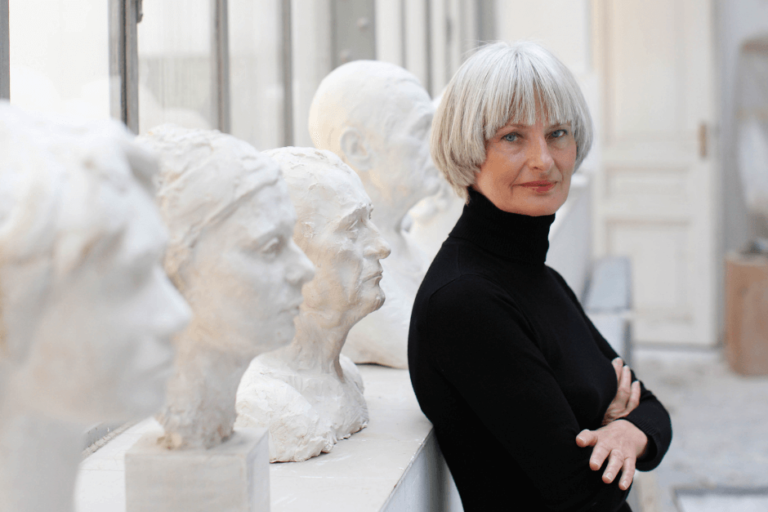The Artists Business Lounge
Art Business Coaching for Visual Artists
7 Ways Your Artistic Identity May Be Holding You Back—And How to Transform It for Success

As a visual artist, your identity is deeply rooted in your creative work. It influences how you approach your craft, make decisions, and define success.
However, this identity, while essential to your art, might also be the very thing holding you back. In this article, we’ll explore seven ways your identity could be preventing you from moving forward, and we’ll provide strategies to flip the switch so that your identity becomes a powerful force that guarantees your success.
1. Overidentification with Your Art
The Problem:
When your identity is too closely tied to your artwork, every critique or rejection feels personal. This can lead to a defensive approach, where the fear of failure stifles your willingness to experiment and take risks, ultimately hindering your growth as an artist. The emotional weight of negative feedback can cause you to question your abilities, making it difficult to move forward with confidence.
The Strategy:
Detach your self-worth from your artwork. Start viewing your creations as reflections of your skills and creativity, not as representations of your intrinsic value. Consider adopting a growth mindset, where each piece of art is a learning experience rather than a definitive measure of your talent. Engage in self-compassion exercises, reminding yourself that your art is a part of you but does not define your entire being. By creating this emotional distance, you allow yourself the freedom to innovate and explore new directions without the fear of judgment.

2. Sticking to a Fixed Style
The Problem:
Your signature style is a key part of your artistic identity, but it can also become a creative cage. Relying too heavily on a particular style can limit your ability to explore new techniques, ideas, and markets, leading to creative stagnation. Over time, what once felt like an authentic expression of your voice may start to feel more like a constraint, limiting your potential to evolve and adapt to new opportunities.
The Strategy:
Evolve your style by embracing creative experimentation. Regularly challenge yourself to explore new mediums, themes, and techniques. Engage in creative exercises that push you out of your comfort zone—try collaborative projects, explore different cultural influences, or even attempt genres outside your norm. This doesn’t mean abandoning your signature style but rather expanding and adapting it. By doing so, you can make your style more versatile and responsive to different creative and commercial contexts, allowing it to grow along with you as an artist.

3. Internalising a Lack of Success
The Problem:
If you’ve struggled to achieve the level of success you envisioned, this lack of success can become embedded in your identity. You may begin to see yourself as an artist who is always “almost there” but never fully successful. This mindset can create a self-fulfilling prophecy, where your perceived lack of success becomes a barrier to actually achieving it. Over time, this internalised narrative can erode your confidence, making it harder to take the bold steps necessary to reach your goals.
The Strategy:
Redefine success and rewrite your narrative. Understand that success is not a static state but a journey made up of many smaller victories. Reflect on the milestones you’ve achieved, no matter how small, and recognise them as legitimate successes. Start a practice of journaling or creating a visual record of your achievements to remind yourself of your progress. Shift your focus from what you haven’t achieved to what you have. By reframing your experiences and viewing setbacks as learning opportunities rather than failures, you can break free from a limiting identity and position yourself for greater success. Surround yourself with supportive peers who recognise your talents and can help reinforce a positive, forward-looking self-identity.
4. Perfectionism
The Problem:
Perfectionism can be paralysing. The pursuit of flawlessness might cause you to delay or even abandon projects, fearing they’ll never meet your high standards. This constant quest for perfection can stifle your productivity and creativity, leading to burnout and frustration as you struggle to meet unattainable expectations.
The Strategy:
Embrace imperfection as part of the creative process. Shift your mindset to prioritise completion over perfection, recognising that the imperfections in your work often add character and authenticity. Set realistic goals for your projects, allowing room for experimentation and learning. Use deadlines to push yourself to finish projects, understanding that no piece of art is ever truly perfect. Often, what you perceive as imperfect may be what gives your work its unique character and appeal. By releasing yourself from the shackles of perfectionism, you open up space for growth, innovation, and more consistent creative output.
5. Resistance to Commercialisation
The Problem:
You may fear that monetising your art compromises its integrity, leading to resistance against exploring commercial avenues. This mindset can prevent you from sustaining a successful career, particularly in today’s competitive market. The tension between maintaining artistic purity and achieving financial stability can create internal conflict, making it difficult to pursue lucrative opportunities without feeling like you’re selling out.
The Strategy:
Reframe your view of commercialisation as a means to sustain and enhance your creative practice. Consider it not as selling out but as finding ways to align your financial success with your artistic vision. Explore ways to market your work that reflect your values—whether through limited editions, commissions that resonate with your vision, or collaborations with brands that share your ethos. You can also consider alternative revenue streams like teaching workshops, offering online courses, or creating digital products that complement your art. By embracing commercialisation strategically, you can maintain your integrity while also achieving financial success, ensuring that your art can thrive both creatively and commercially.

6. Attachment to Past Successes
The Problem:
Resting on past successes can lead to complacency. If you’re overly attached to previous achievements, you might resist taking risks or pursuing new directions that could lead to even greater accomplishments. This can result in creative stagnation, as you become more focused on maintaining your current status rather than pushing the boundaries of what you can achieve.
The Strategy:
Use past successes as motivation rather than limitations. Celebrate your achievements, but don’t let them define your future. Set new, ambitious goals that push you beyond what you’ve already accomplished. Consider how you can build on your past successes to explore new mediums, themes, or markets. By continually striving for growth, you ensure that your identity as an artist remains dynamic and forward-looking. Embrace the idea that your best work is always ahead of you, not behind, and that each success is just a stepping stone toward even greater accomplishments.
7. The Lone Wolf Mentality
The Problem:
Many artists take pride in their independence, but working in isolation can prevent you from gaining fresh perspectives, collaborating on larger projects, or tapping into broader networks that could elevate your career. The solitude that once fuelled your creativity might start to feel more like a barrier, keeping you from the richness of shared experiences and ideas.
The Strategy:
Build a community around your art. Engage with other artists, attend workshops, and seek out collaborative opportunities. Use social media and online forums to connect with artists globally, sharing insights and feedback. These interactions can lead to creative synergies that push your work in new directions. Additionally, sharing your experiences and challenges with peers can provide valuable insights and support, helping you to grow both personally and professionally. A supportive network can also open doors to new opportunities, such as joint exhibitions, co-authored projects, or even mentorship roles, further expanding your reach and influence.
Conclusion
Your identity as an artist is a complex and powerful force. It can propel you forward, but it can also hold you back if left unchecked. By recognising the ways your identity might be limiting your growth and implementing strategies to transform these limitations, you can turn your identity into a driving force for success. Embrace evolution, seek out new opportunities, and remain open to growth. By doing so, you’ll ensure that your identity not only reflects your current achievements but also guarantees your future success.
Through this journey of self-discovery and transformation, you’ll not only expand your creative horizons but also strengthen the foundation of your artistic identity. Your success as an artist is not just about your talent; it’s also about how you see yourself and how that self-perception shapes your decisions and actions.
By flipping the switch on limiting beliefs and embracing a growth-oriented identity, you set yourself on a path where your identity becomes a guarantee of your success, rather than a barrier to it.
The Success System Program



